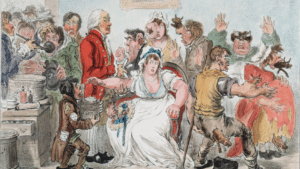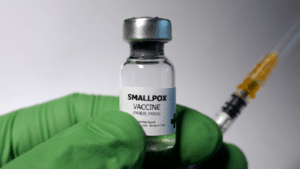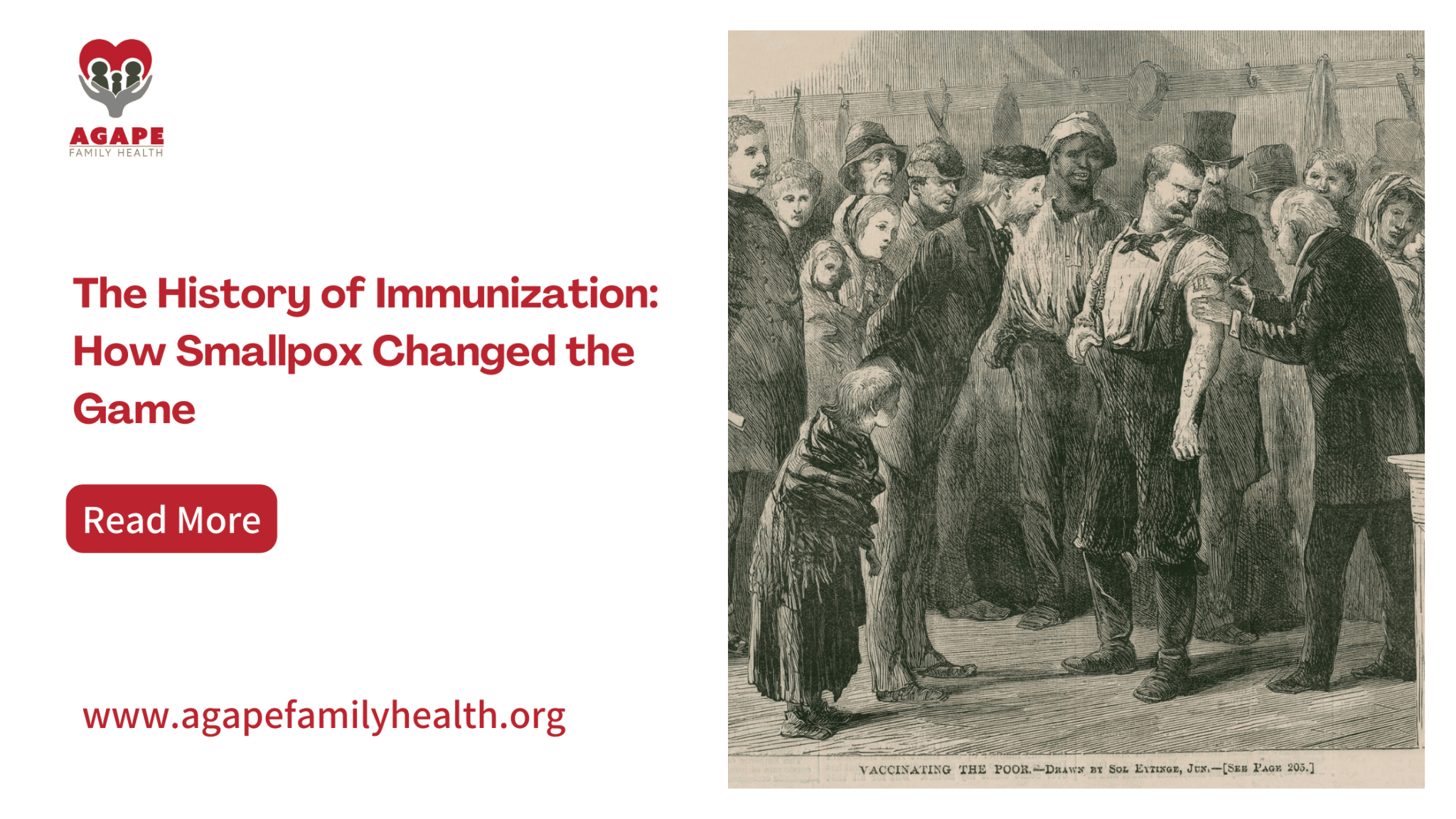Imagine a world where the smallest cut could lead to a fatal infection, where entire populations are wiped out by invisible enemies, and where the word ‘vaccination’ hasn’t even been coined yet. It’s hard to believe, but this was the reality for most of human history. Today, in an age where we have almost instant access to a plethora of vaccines, it’s easy to take immunization for granted. But the path to our current understanding and practice was paved with challenges, innovations, and one game-changing event: the global battle against smallpox.
Dive with us into the gripping history of immunization and discover how the eradication of this once-feared disease reshaped our world and propelled us into a new era of medical miracles.
The History of Immunization

Essentially, immunization, often referred to as ‘vaccination’, is a medical strategy aimed to bolster the body’s defense against distinct diseases. By administering a vaccine, the immune system gets activated, empowering it to identify, combat, and remember potential threats. This ensures long-term protection against specific health threats.
Delving deep into history, we uncover immunization’s roots winding through ancient China’s pathways and India’s enigmatic terrains. Early medical practitioners observed an interesting trend: individuals who recovered from certain illnesses typically exhibited enhanced resilience against them in the future. This pivotal observation anchors our modern comprehension of immunity. Building on these ancient insights, variolation (commonly referred to now as inoculation) emerged as a pioneering method to foster immunity, especially in the battle against smallpox.
The Unsung Heroine of Vaccination
Lady Mary Wortley Montagu isn’t just another name in medical history; she’s an unsung heroine in the world of early vaccination. During an era dominated by medical skepticism, Lady Montagu personally battled smallpox, leaving her with physical scars but also a burning passion to combat the disease. Her time in Constantinople introduced her to variolation, an early form of immunization, which she bravely adopted for her own children.
On returning to England, despite facing backlash, she became a fierce advocate for this method. When smallpox hit England in 1721, her influence made variolation a go-to preventive strategy. While Edward Jenner’s vaccines would later steal the spotlight, Lady Montagu’s gutsy advocacy was a game-changer, laying the groundwork for modern-day immunization.
A Brief Journey Through the History of Smallpox
Smallpox: a word that once struck terror in the hearts of many, now stands as a testament to the triumph of science and collective human endeavor. This highly contagious disease, caused by the variola virus, has a history that spans thousands of years.

Ancient Origins
The earliest evidence of smallpox dates back over 3,000 years, with hints of its presence found in ancient Egyptian mummies. Fast-forward to the written records of ancient China, India, and Rome, where we find more references to this feared disease.
Europe’s Deadly Visitor
Throughout the Middle Ages and into the Renaissance, smallpox became a recurring nightmare in Europe, killing millions. Renowned figures like Peter II of Russia and Queen Mary II of England succumbed to its wrath. Each outbreak led to significant population declines and social upheavals.
New World, Old Virus
When European explorers ventured to the Americas, they unwittingly brought smallpox with them. Native American populations, lacking immunity, were devastated, with mortality rates reaching up to 90% in some communities. The impacts of these epidemics significantly shaped the course of history in the New World.
Smallpox Vaccination: The Game-Changer for Modern Immunization
The 18th century saw hope emerge in the form of Lady Mary Wortley Montagu’s introduction of variolation to England from the Ottoman Empire. However, it was Edward Jenner’s 1796 experiment – using the milder cowpox virus to confer immunity against smallpox – that truly revolutionized the fight against the disease. His method, which became known as vaccination (from the Latin ‘vaca’, meaning cow), laid the groundwork for modern immunology.
The development and deployment of the smallpox vaccine wasn’t just a singular triumph over a deadly disease; it set the stage for a new era of medical advancement, laying the foundation for future vaccines. Here’s how the smallpox vaccine changed the game:
Proof of Concept: Before Edward Jenner’s pioneering work with smallpox, the very idea of vaccination—introducing a form of a pathogen to provoke immunity—was a largely untested concept in Western medicine. Jenner’s success with cowpox material to prevent smallpox infections proved that vaccines could work. It offered a proof of concept that became the gold standard for infectious disease prevention.

Safety Over Variolation: Prior to vaccination, variolation was a method used to confer immunity against smallpox. However, it involved the direct introduction of smallpox material and carried significant risks. Jenner’s method, which used the related but less dangerous cowpox virus, emphasized safety, a principle that remains paramount in vaccine development today.
Mass Immunization Campaigns: The global campaign to eradicate smallpox demonstrated the power of coordinated, large-scale vaccination efforts. Lessons learned from this campaign, such as the importance of surveillance, international cooperation, and community engagement, have informed subsequent vaccination campaigns against diseases like polio and measles.
Cold Chain Development: The need to transport the smallpox vaccine under specific temperature conditions led to the development of the ‘cold chain’—a system to store and transport vaccines at recommended temperatures. This infrastructure is crucial for the distribution of many modern vaccines.
A Global Achievement: The 20th century saw an unprecedented global collaboration. The World Health Organization (WHO) launched an intensive eradication campaign in 1967. Through widespread vaccination, rigorous case tracking, and international cooperation, the last naturally occurring case of smallpox was reported in 1977 in Somalia. In 1980, the WHO officially declared the world free of smallpox.
Boost in Research & Development: The success of the smallpox vaccine spurred interest and investment in vaccine research and development. Post smallpox, there was a notable surge in efforts to develop vaccines for other major diseases, leading to vaccines for illnesses like yellow fever, tetanus, and whooping cough.
Building Public Trust: While there was initial skepticism, the undeniable success of the smallpox vaccine in preventing disease helped foster public trust in the efficacy and safety of vaccines, setting the stage for broader acceptance of subsequent vaccines.
Regulatory Frameworks: The need to ensure the safety and effectiveness of the smallpox vaccine led to the development of stricter regulatory and oversight mechanisms. These have evolved over time and now form a robust system governing the approval and monitoring of all vaccines.
In essence, the smallpox vaccine did more than just conquer one disease; it provided a blueprint for future vaccine development, distribution, and administration. Its legacy is seen in every vaccine vial and every life saved from vaccine-preventable diseases today.
Today, smallpox remains the only human disease to have been completely eradicated, symbolizing what humanity can achieve when united in a common goal. It’s a tale of terror turned triumph, a story worth remembering and celebrating.
FAQs
- What were the earliest forms of immunization?
Early forms of immunization included variolation (inoculation with smallpox) and the use of cowpox to protect against smallpox.
- How do vaccines work to provide immunity?
Vaccines contain weakened or inactivated forms of pathogens. When administered, they stimulate the immune system to produce antibodies, providing immunity without causing the disease itself.
- Are vaccines safe for everyone?
Vaccines are generally safe, but some individuals may have contraindications or allergies. It’s essential to consult with a healthcare provider before vaccination.
- What is the current status of immunization around the world?
Immunization programs continue to expand globally. However, vaccine hesitancy and disparities in access remain challenges to achieving widespread vaccination.
- What can individuals do to support immunization efforts?
Individuals can promote immunization by staying informed about vaccines, getting vaccinated according to recommended schedules, and advocating for vaccination in their communities.
Conclusion
The history of immunization is a testament to human ingenuity and our ability to combat deadly diseases. From ancient observations to the development of sophisticated vaccines, the journey has been remarkable. Immunization remains a cornerstone of modern medicine, offering hope for a healthier future. Please check out our resources about immunization in our current times.



